
Mali: the home of one of Islam's greatest empires
Mali is the largest country in the West Africa. 90% of its 11 million people are Muslims. Mali holds a special place in Muslim and African history.
The Great Mansa Musa
• Between 1312 and 1337 Mali was ruled by a Muslim emperor named Mansa Musa
• He was described as upright, tolerant of other religions, generous, just with a strong inclination towards law and scholarship.
• he established schools. It was under his rule that the University of Sankore was founded in Timbuktu (see details below).
• Mansa Musa brought the empire to the peak of its political power and cultural achievement.
• This emporer ran a smooth administration. Under his rule, the University of Sankore was founded, trade expanded into Timbuktu, and architectural innovations in Gao, Timbuktu, Niani, and all of Mali proliferated.
• The moral and religious principles he had taught his subjects endured after his death.
• Mansa Musa is reported to have noted it would take one year to travel from one end of his empire to the other.
• Ibn Battuta, a 14th-century Muslim traveller reported that it took close to four months to travel from the northern borders of the Mali empire to Niani in the south.
• Mansa Musa commissioned the building of a mosque in Gao, made of burnt bricks. Until then, this had not been used as a building material in West Africa, and in fact, it was still being admired as late as the 17th century.
• Along with the encouragement of trade and commerce under Mansa Musa, learning and the arts received royal patronage.
• Scholars who were mainly interested in history, Qur'anic theology, and law made Timbuktu's mosque of Sankore a teaching centre, and laid the foundations of the University of Sankore.
• Mansa Musa probably died around 1332.
About Mansa Musa's Hajj
Although Hajj is not an occasion to demonstrate wealth, Mansa Musa's Hajj in 1324 brought to the world's eye Mali's incredible wealth.
• During his Hajj, Mansa Musa was accompanied by a caravan of 60,000 men.
• The emperor had a baggage train of 80 camels. Each carried 300 pounds of gold.
• Mansa Musa's piety, generosity, fine clothes and the exemplary behaviour of his followers left a very good impression.
• Mansa Musa visited Cairo, and almost caused ill feelings when he, after some difficulty decided to visit the Mamluk sultan Al-Malik an-Nasir. This was because Mansa Musa was so absorbed in his religious observances.
•The historian al-Umari visited Cairo 12 years after Mansa Musa's visit. There, he found the city's close to one million people still praising the Malian emperor because of his generosity.
•The emperor spent so much in his generosity, that he flooded the Cairo market with gold. This caused such a decline in its value that, about 12 years later, the market had still not fully recovered!
About the city of Timbuktu Yesterday
• Timbuktu became a famous center of learning, especially in law and the study of Islam
• For over 400 years, this city was the greatest trading place in sub-Saharan Africa.
• It was incorporated into the Mali empire in the late 13th or early 14th century
• Its location at the meeting point of desert and water made it an ideal trading centre.
• Traders mined salt in the desert. In Africa, salt was sometimes worth more than gold. Miners would carry the salt to the city where merchants would transport it on the river to faraway places.
• By the 14th century, the city was a prosperous center for the trans-Saharan gold-salt trade.
• Three of West Africa's oldest mosque (Djingareyber, Sankore, and Sidi Yahia) were built in Timbuktu in the 14th and early 15th centuries.
• Mansa Musa built the Great Mosque (Djinguereber) and a royal residence, the Madugu
• the Granada architect Abu Ishaq as-Sahili designed the Sankore mosque, around which Sankore University was established. The mosque is still standing today.
• The Tuareg regained control of the city in 1433, but ruled from the desert. Trade and learning continued in Timbuktu and by 1450, the city's population increased to about 100,000.
• Timbuktu had about 25,000 scholars. Many of them had studied in Mecca or in Egypt.
• The city was conquered by Sonni 'Ali in 1468, who did not get along with the Muslim scholars.
• Sonni Ali was followed by Muhammad I Askia, the first ruler of the new Askia dynasty.
• Between 1493-1591, which was the Askia period, Timbuktu reached the height of its commercial and intellectual development. Merchants from various North African cities gathered there to buy gold in exchange for salt, North African cloth and horses.
• By 1550 it had three universities linked to the principal mosques.
• By this time it also had 180 Quranic schools.
• Some say Timbuktu began to decline in influence when the Portuguese showed it was easier to sail around the coast of Africa than travel through the desert.
About European Colonial powers in Timbuktu
•Explorers from Europe reached Timbuktu in the early 19th century. In 1826, Gordon Laing of Scotland was the first to arrive.
•Laing was followed by French explorer René-Auguste Caillié in 1828. Caillié had studied Islam and learned Arabic. He disguised himself as an Arab when he reached Timbuktu. He returned to Europe two weeks later, and became the first explorer to return to Europe with first-hand knowledge of the city. Rumours of Timbuktu's wealth had reached Europe centuries before because of tales of Mansa Musa's Hajj.
• German geographer Heinrich Barth reached Timbuktu after trekking across Africa for five years in 1853. He later published a chronicle of his travels.
• The French attacked and occupied Timbuktu in 1894.
• In 1960 it became part of the newly independent Republic of Mali
About Timbuktu today
• Today it is a mud built town of an estimated 20,500 people on the edge of the Sahara.
• Today Islamic learning continues only among a handful of aging scholars. A language institute (Lycée Franco-Arabe) teaches Arabic and French.
• Timbuktu is now an administrative centre of Mali.
• It is a regional trade center for salt and other basic commodities.
• In the late 1990s, restoration efforts were undertaken to preserve the city's three great mosques, which are threatened by sand encroachment and by general decay.
• In 1988, the city was designated a UNESCO World Heritage site
How Islam reached Mali-through trade
• During the 9th century, Muslim Berber and Tuareg merchants brought Islam into West Africa through the trans-Sahraran trade routes.
• From trading towns on the northern edge of the Sahara, Muslims carried Islam, goods and new ideas to the cultures nearly 1,000 miles south
• This trade resulted in a slow but steady conversion to Islam of many of those with whom they had personal contact.
• Continuous contact between Muslim traders and non-Muslims in West Africa quickly resulted in the conversion of Africans to Islam.
• By the end of the 10th century, the Soninke culture in Mauritania were Muslim.
• These Muslims pushed further south to the Senegal River valley and southeast as far as the Niger River. Here, more people converted. This brought Islam from the edges of Africa to its interior.
• Even though the Soninke were able to convince many to embrace Islam, the most successful conversion was through the intercultural exchange brought about by trans-Saharan trade.
• By the17th century, every Sudanic state from Senegal, in the west, to Kanem, in the east, owed their rise in some way to Islam. Conversion to Islam linked the West African savannah through belief in One God and similar new forms of political, social and artistic accouterments.
• For these medieval African kingdoms, especially Mali and Songhay, Islam brought with it international fame and prestige.
• Cities like Timbuktu, Gao and Kano became international centers of Islamic learning. Muslim rulers like Mansa Musa of Mali, Songhay's Askia Muhammed, and Bornu's Idris Alooma, became known throughout North Africa and the Near East for their piety, and the wealth and intellectual activity of their kingdoms.
• Muslim traveler Ibn Battuta visited Mansa Musa in the mid-14th century and remarked on all of the above.
Mali's Geography Today
• Mali is the largest country in West Africa
• It is a total of 1.24 million sq km
• It is slightly less than twice the size of Texas
• The larger northwestern region of the country, which extends into the Sahara, is almost entirely arid desert or semidesert.
• the central region is known as the Sahel
• border countries: Algeria 1,376 km, Burkina Faso 1,000 km, Guinea 858 km, Cote d'Ivoire 532 km, Mauritania 2,237 km, Niger 821 km, Senegal 419 km
Mali's Natural resources
• These are gold, phosphates, kaolin, salt, limestone, uranium, bauxite, iron ore, manganese, tin, and copper deposits are known but not exploited
Mali's Economics
• It is one of the poorest countries in the world
• Economic activity is largely confined to the riverine area irrigated by the Niger. About 10% of the population is nomadic and some 80% of the labor force is engaged in farming and fishing.
• Industrial activity is concentrated on processing farm commodities.
• Mali is heavily dependent on foreign aid and vulnerable to fluctuations in world prices for cotton, its main export.
• In 1997, the government continued its successful implementation of an IMF-recommended structural adjustment program that is helping the economy grow, diversify, and attract foreign investment.
• Mali's adherence to economic reform, and the 50% devaluation of the African franc in January 1994, has pushed up economic growth.
• Several multinational corporations increased gold mining operations in 1996-98, and the government anticipates that Mali will become a major Sub-Saharan gold exporter in the next few years. Annual growth thus may fall in the 5% range in 1999-2000, and inflation held to 5% or less.
• GDP: purchasing power parity–$8 billion (1998 est.)
• GDP–real growth rate: 4.6% (1998 est.)
• Labor force–by occupation: agriculture and fishing 80% (1998 est.)
• Budget: revenues are $730 million and expenditures: $770 million, including capital expenditures of $320 million (1997 est.)
• Industries: minor local consumer goods production and food processing; construction; phosphate and gold mining
• Agricultural products: cotton, millet, rice, corn, vegetables, peanuts; cattle, sheep, goats
• Exports: $590 million (f.o.b., 1998 est.)
• Exports–commodities: cotton 50%, gold, livestock (1998 est.)
• Exports–partners: Thailand 20%, Italy 20%, China 9%, Brazil, franc zone (1997)
• Imports: $600 million (f.o.b., 1998 est.)
• Imports–commodities: machinery and equipment, construction materials, petroleum, foodstuffs, textiles
• Imports–partners: Cote d'Ivoire 19%, France 17%, other franc zone and EU countries (1997)
• Debt–external: $3.1 billion (1998)
• Economic aid–recipient: $596.4 million (1995)
• Currency: 1 Communaute Financiere Africaine franc (CFAF) = 100 centimes
Mali's Population
• The country has a population of about 10,429,124
• The age breakdown is the following:
0-14 years: 47% (male 2,482,301; female 2,460,894)
15-64 years: 49% (male 2,447,712; female 2,708,978)
65 years and over: 4% (male 155,178; female 174,061) (1999 est.)
• Its population growth rate is about 3.01%
• Its birth rate is 49.5 births/1,000 population (1999 est.)
• The death rate is 18.56 deaths/1,000 population (1999 est.)
• The sex ratio is the following:
at birth: 1.03 male(s)/female
under 15 years: 1.01 male(s)/female
15-64 years: 0.9 male(s)/female
65 years and over: 0.89 male(s)/female
total population: 0.95 male(s)/female (1999 est.)
• Its Infant mortality rate is 119.44 deaths/1,000 live births (1999 est.)
Life expectancy at birth
total population: 47.5 years
male: 46.09 years
female: 48.96 years (1999 est.)
Total fertility rate
• 6.96 children born/woman (1999 est.)
• Ethnic groupings are Mande 50% (Bambara, Malinke, Sarakole), Peul 17%, Voltaic 12%, Songhai 6%, Tuareg and Moor 10%, other 5%
Religions
• Muslim 90%, indigenous beliefs 9%, Christian 1%
Languages
• French (official), Bambara 80%, numerous African languages
Literacy
(age 15 and over can read and write)
• Total population: 31%
male: 39.4%
female: 23.1% (1995 est.)
Mali's Politics
• in 1960 it became independent of French colonial rule
• the country has suffered from periods of internal and external strife, as well as from an extended drought in the early 1970s
• Mali is a republic
• Its capital is Bamako
• Its administrative divisions are divided into 8 regions (regions, singular–region); Gao, Kayes, Kidal, Koulikoro, Mopti, Segou, Sikasso, Timbuktu
• Its constitution was adopted 12 January 1992
• Its legal system is based on the French civil law system and customary law; judicial review of legislative acts in Constitutional Court (which was formally established on 9 March 1994); • Anyone age 21 and up can vote
Mali's executive branch
• Chief of state: President Alpha Oumar KONARE (since 8 June 1992)
Head of government: Prime Minister Ibrahim Boubacar KEITA (since March 1994)
• Cabinet: Council of Ministers appointed by the prime minister
elections: president elected by popular vote for a five-year term; election last held 11 May 1997 (next to be held May 2002); prime minister appointed by the president
election results: Alpha Oumar KONARE reelected president; percent of vote–Alpha Oumar KONARE 85.15%, Mamadou DIABY 4.09%, other 10.76%
Mali's Legislative branch
• A unicameral National Assembly or Assemblee Nationale (147 seats; members are elected by popular vote to serve five-year terms)
• Elections were last held 20 July and 3 August 1997 (next to be held in two rounds in 2002); note–much of the opposition boycotted the election
election results: percent of vote by party–NA; seats by party–ADEMA 130, PARENA 8, CDS 4, UDD 3, PDP 2
Mali's Judicial branch
• Supreme Court (Cour Supreme)
Political parties and leaders
• Alliance for Democracy or ADEMA [Ibrahim N'DIAYE, secretary general];
• Party for National Renewal or PARENA [Yoro DIAKITE, chairman; Tiebile DRAME, secretary general];
• Democratic and Social Convention or CDS [Mamadou Bakary SANGARE, chairman];
• Union for Democracy and Development or UDD [Moussa Balla COULIBALY];
• Party for Democracy and Progress or PDP [Me Idrissa TRAORE];
• National Congress for Democratic Initiative or CNID [Mountaga TALL, chairman];
• Sudanese Union/African Democratic Rally or US/RDA [Mamadou Bamou TOURE, secretary general];
• Rally for Democracy and Progress or RDP [Almamy SYLLA, chairman];
• Rally for Democracy and Labor or RDT [Ali GNANGADO];
• Union of Democratic Forces for Progress or UFDP [Youssouf TOURE, secretary general]; • Movement for the Independence, Renaissance and Integration of Africa or MIRIA [Mohamed Lamine TRAORE, Mouhamedou DICKO]
Political pressure groups and leaders
• United Movement and Fronts of Azawad or MFUA;
• Patriotic Movement of the Ghanda Koye or MPGK
Flag description
• Three equal vertical bands of green (hoist side), yellow, and red; uses the popular pan-African colors of Ethiopia
The Military
• Military manpower–availability: males age 15-49: 2,128,375 (1999 est.)
• Military manpower–fit for military service: males age 15-49: 1,218,732 (1999 est.)
• Military expenditures–dollar figure: $49 million (1996)
• Military expenditures–percent of GDP: 2% (1996)
Sources of Information include: Britannica online, World Book online, CIA World Factbook 1999

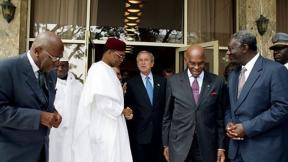
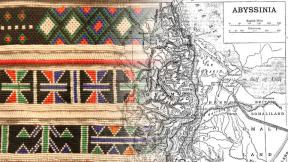
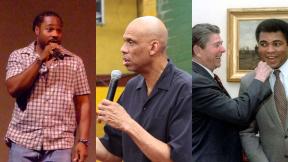
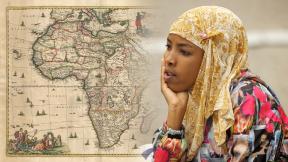
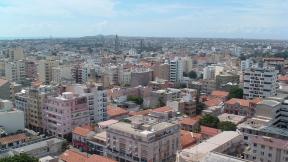


Comments
اسلام عليكم
اسلام عليكم
Alhamdulillah! Sub’hannali wa bi Hamdihi! Happy/Proud to be Muslim! What a heritage! Allah Knows Best! Allah is “Indeed” Al-Aziz, Al Mulk!! ”Shukran”
for this enlightening information on this prestigious Path. Ya Allah!! “Thee do we worship, and to Thee do we seek Help!”
What a shame and evil end for those who try to extenquish the Nur of a people simply because “we” believe in Allah! Astaghfirllah! May Allah grant those who published these articles His Protection and Infinite Mercy! And for us who are guided to these writings, empowerment and appreciation!
Khadijah
Error neede to be corrected :"• Between 1312 and 1337 Mali was ruled by a Muslim emperor named Mansa Musa"A couple of paragraphs later you wrote :"Mansa Musa was believed to die in 1332"
Location
Jazakum Allahu Khairan for a very informative article. Learned something new today.
Location
i loved all the info. about population! very interesting, and great help with school work.
Location
Add new comment